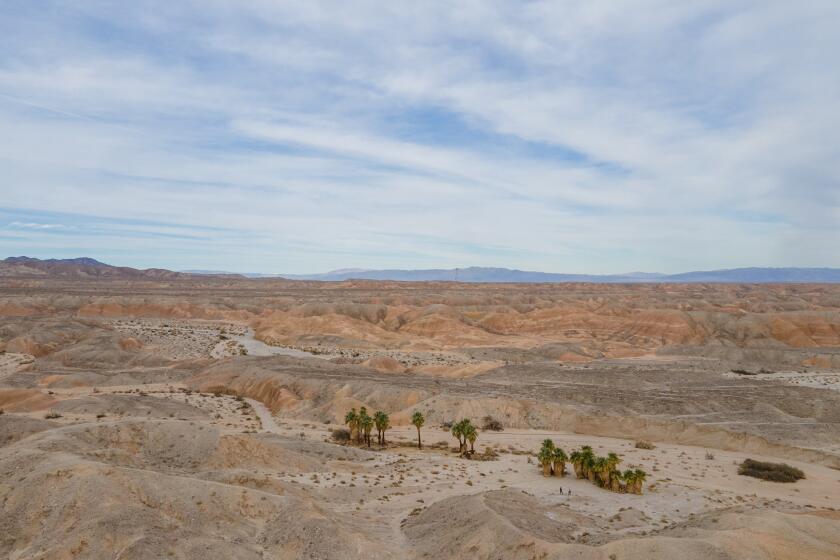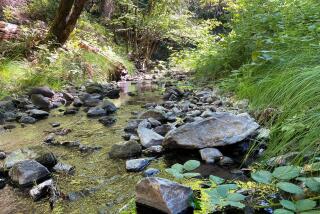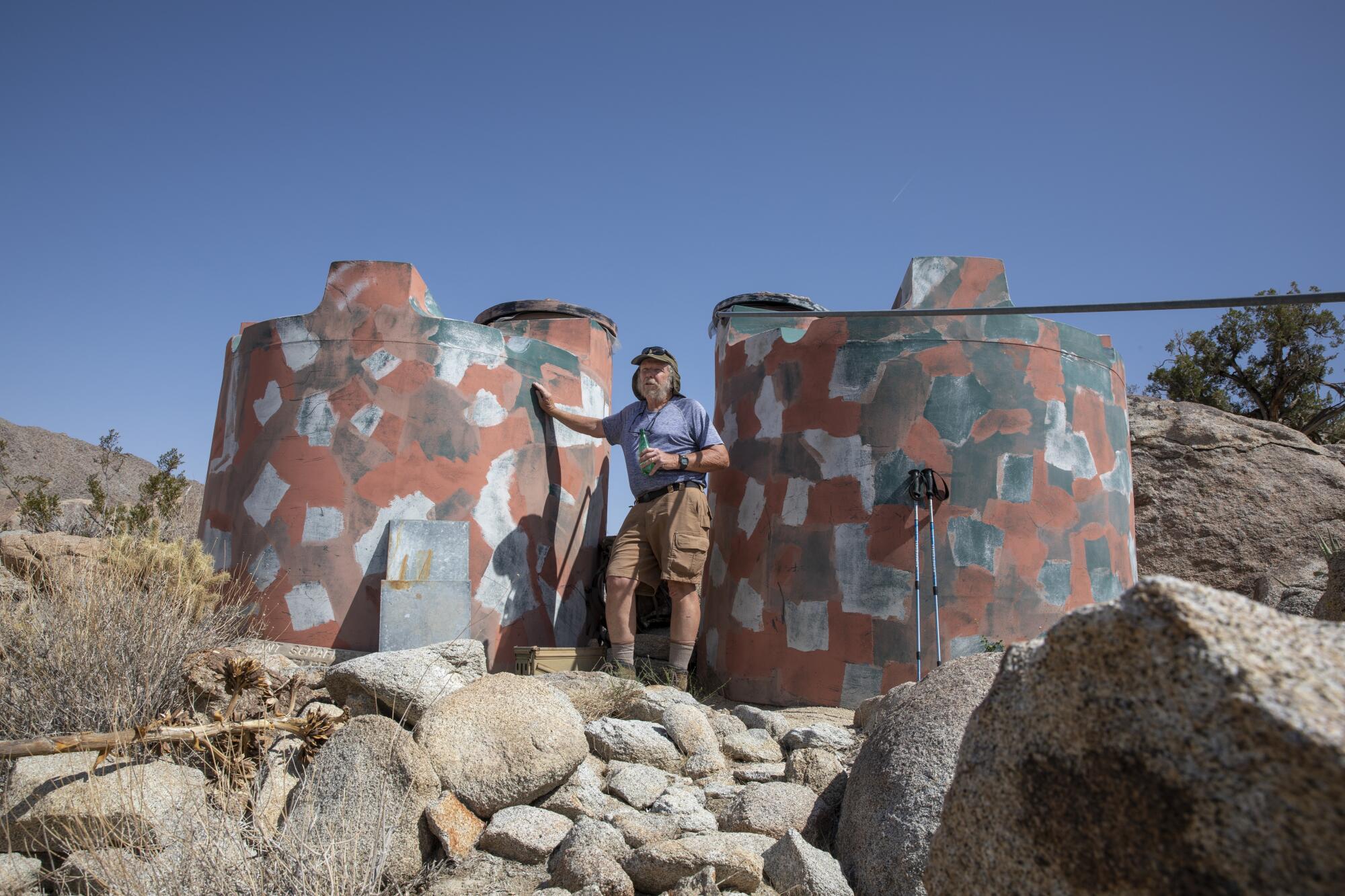
- Share via
SAN DIEGO — Mark Jorgensen scowled, squinting under the desert sun on a recent afternoon in the Vallecito Mountains south of Borrego Springs.
“That’s bush league,” said the former superintendent of Anza-Borrego Desert State Park as he peered at a large gash in a 2,500-gallon plastic tank used to collect rainwater for bighorn sheep and other wildlife. Black tape patching the hole in the “guzzler” had come loose, and the top of the container was caving in.
This story is for subscribers
We offer subscribers exclusive access to our best journalism.
Thank you for your support.
“That needs to be fixed pronto,” said the 70-year-old, who during his tenure with the park zealously oversaw such wildlife feeding apparatus. “If a sheep fell in there, it would be a horrible death, but it would also poison the water. Other sheep could drink it and die.”
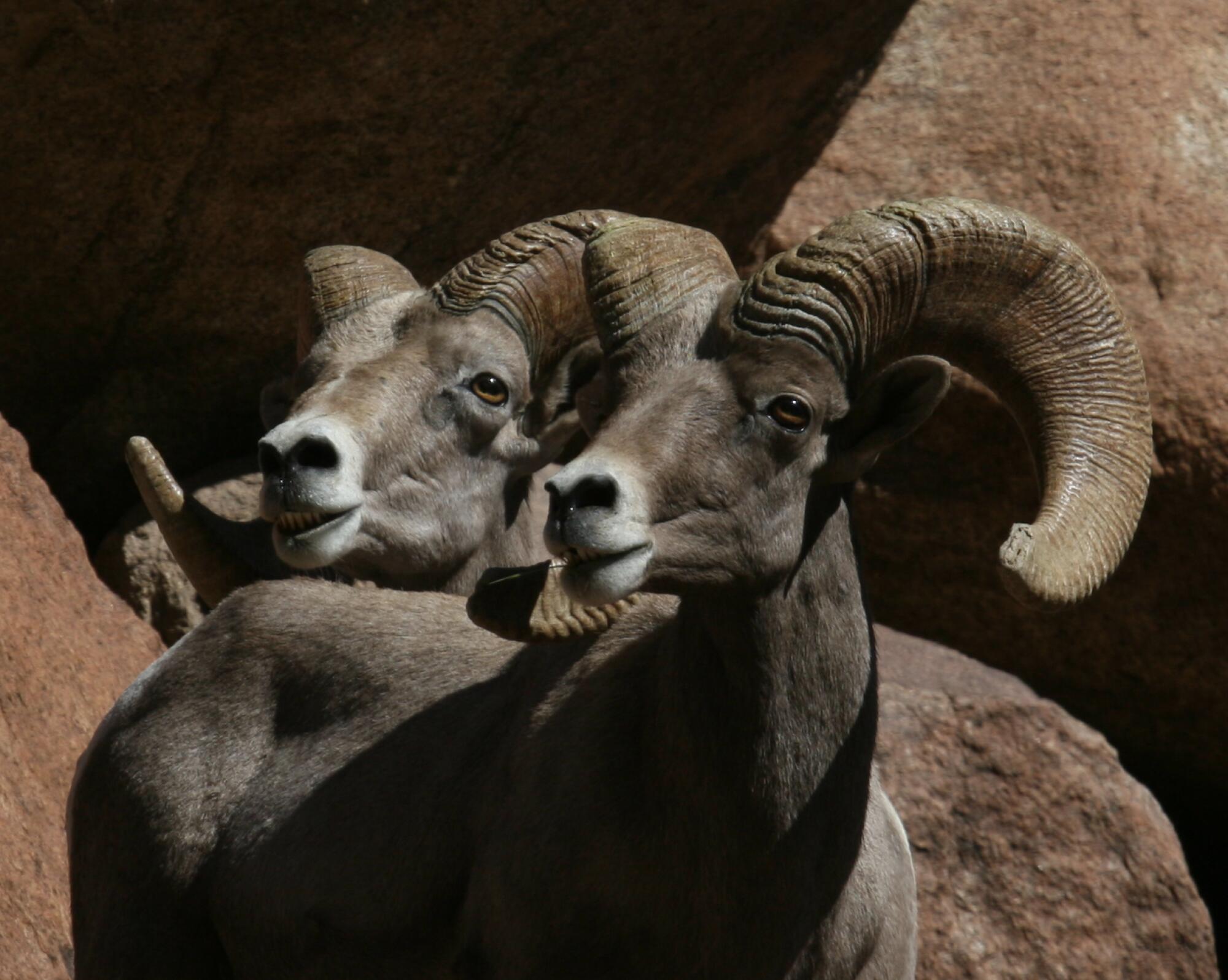
Anza-Borrego park has recently come under fire by Jorgensen, longtime volunteers and others for allegedly neglecting its guzzler systems, which for decades helped the federally endangered Peninsular bighorn sheep rebound from the brink of extinction.
It’s the latest salvo in a fight over whether, and to what extent, the park should prop up one species threatened by climate change. New management has raised concerns about the cost and possible futility of such endeavors.
Marines to the rescue
Drought conditions that continue to ravage much of the Southwest have highlighted the stakes. In recent years, park officials and hunting groups from California to Arizona, Utah and Nevada have coordinated numerous, often costly emergency helicopter trips to fill empty guzzlers.
Last year, Anza-Borrego park saw its first-ever helicopter water delivery to a guzzler thanks to support from the U.S. Marines, which used the opportunity as a training mission. Park officials are considering water drops at three more locations this summer.
It’s not clear that the park is keen on making these drops routine, despite the military and pro-hunting groups like the Society for the Conservation of Bighorn Sheep having, so far, picked up the tab.
From wetlands to badlands, plants and wildlife in eastern San Diego County are struggling to survive. Ecologists face tough decisions about how to respond.
Park leadership initially pushed back on the water drop at Whale Peak, according to Jorgensen and others. Community members were shocked by the reluctance as three sheep had been found dead near the empty guzzler in 2020.
This spring things reached a fever pitch when the agency’s top environmental scientist, Danny McCamish, referred to the guzzlers as “bolstering a man-made false population,” hinting at the idea of phasing out the feeding systems.
“Taking them out would be catastrophic without finding a way to wean animals off it,” McCamish said in an interview last month, “but as with any management action we take, we run the risk of manipulating the landscape.”
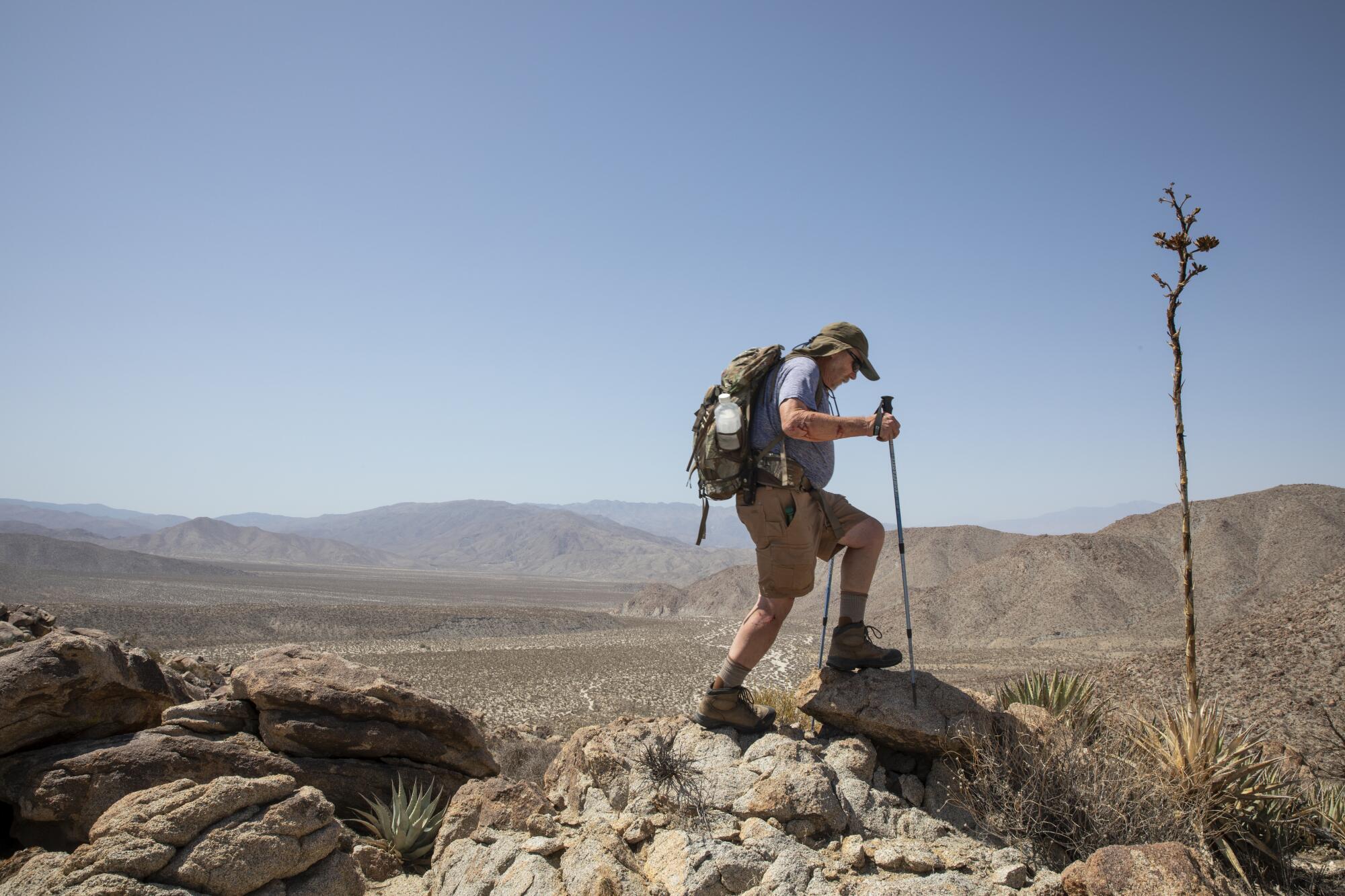
In response, Jorgensen and residents who have long helped maintain the guzzlers publicly blasted McCamish for not fixing leaks and other issues.
“He’s got volunteers that have been doing this faithfully, doing these really difficult hikes to get up there and service them, and we get ignored by him,” said Gloria Kendall, 68, of Escondido. She has led a group that services the Nolina Canyon guzzler. “I wouldn’t be surprised if Danny hasn’t gone up there at all.”
Most recently, Janene Colby, a veteran biologist with the California Department of Fish and Wildlife, felt compelled to speak out — claiming the sheep deaths at Whale Peak were caused by park negligence.
Colby, who has studied and helped nurture the animals in eastern San Diego County for nearly two decades, contends that last year’s water delivery would have been unnecessary had the park had been conducting routine maintenance. She said the tank at Whale Peak ran dry because of a broken pipe, leading to the deaths of three ewes.
“These sheep deaths were due to a lapse of maintenance by the park, not on climate change,” she wrote in a detailed email to the Union-Tribune. “Guzzler tanks are well overdue to be replaced, many parts are falling apart.”
Colby said she notified the park of the situation in August 2020, but repairs were not conducted until November. Then it took until the following summer to get the park to sign off on the water drop.
“I became concerned that there would not be enough water for summer 2021 and tried to engage in a conversation with Danny about the possibility of adding water via a helicopter water haul,” Colby wrote in the email. “Danny would not respond to any emails for over a month. He finally responded but only after our department’s regional manager contacted Danny’s supervisor.”
McCamish, who joined the park in 2018, declined to comment for this story.
The Department of Fish and Wildlife also refused an interview request, barring Colby from speaking further on the issue.
State Parks officials in Sacramento responded to the accusations in an email, writing that the agency has “no plans to phase out the use of water guzzlers,” adding they are “an essential aspect of the recovery efforts for the bighorn sheep.”
Still, the dust-up raises a tough and ever-more relevant question: To what extent should humans prop up a population long impacted by human activity but now caught in the ever-tightening grip of global warming?
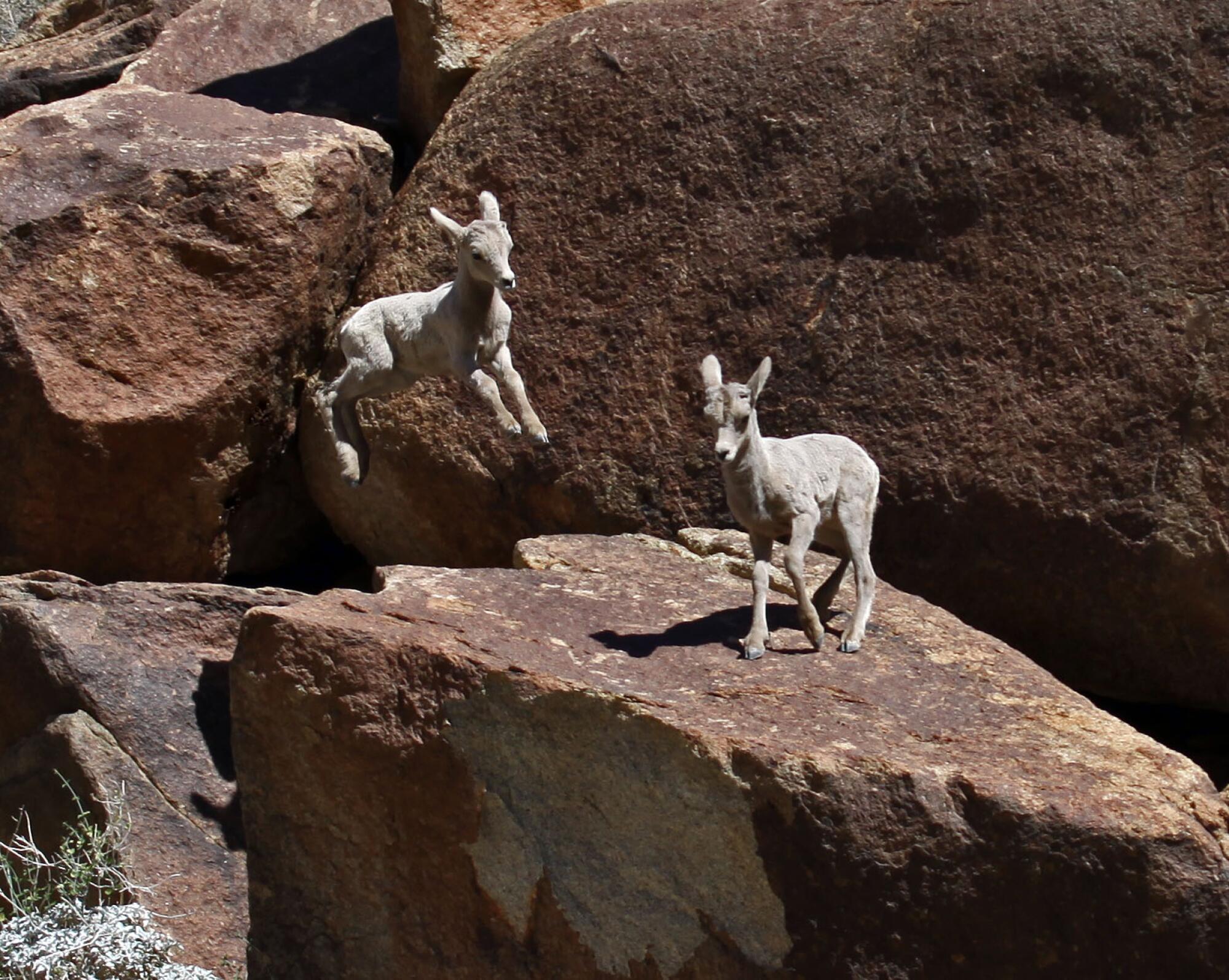
Hunters helping sheep
The Peninsular bighorn sheep was listed as federally endangered in 1998 when a recorded 335 animals made up the total population, ranging from the U.S.-Mexico border to Palm Springs.
Two years later, the park adopted a recovery plan, documenting a devastating pattern of habitat loss and fragmentation by human development. The blueprint also outlined significant impacts to the sheep from historical ranching practices, including sucking watering holes dry and introducing disease-carrying livestock.
By then, Anza-Borrego park had already constructed 10 wildlife guzzlers, which collect rain using synthetic rubber tarps that funnel water to plastic tanks. The containers then supply metal “drinker boxes,” each equipped with a float valve to prevent overflow.
The guzzlers feed not only the horned mountain climbers but bees, birds, coyotes and other wildlife. Usage is documented with cameras that volunteers check twice a year.
The feeding systems were placed on steep, rocky slopes in remote areas because the sheep, which cannot outrun predators, use the rugged terrain to escape lions and coyotes. Ewes tend to seek out the most precipitous landscapes when giving birth.
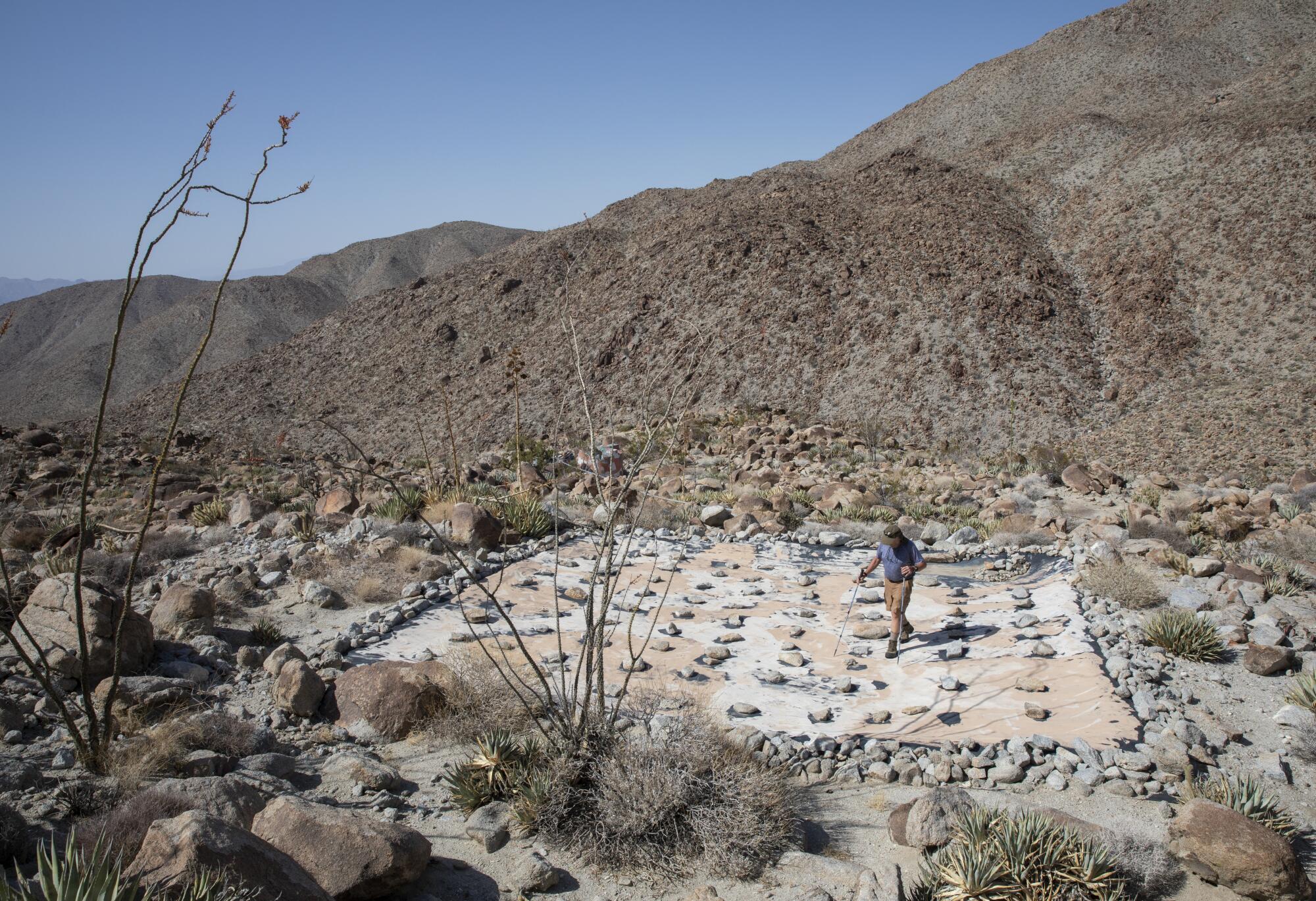
Jorgensen, a former park ranger and resource ecologist, helped oversee the installation of the guzzlers and other efforts to boost sheep populations dating back to the 1980s.
The guzzlers created some controversy at first because hunting groups have helped build and maintain the devices, explained the State Parks employee of 36 years who retired in 2009.
“Sierra Club and Audubon were a little upset with me because I worked with Safari Club and accepted their donations to build a guzzler,” Jorgensen remembered. “They said, ‘Why are you taking money from a hunting organization? You know they just want to shoot them.’”
Hunting of Peninsular and Sierra Nevada bighorn sheep is prohibited in California, pointed out Jorgensen, who is himself a hunter of deer and pronghorn.
The Department of Fish and Wildlife does allow hunting of Nelson bighorn rams in places such as the Mojave and Sonoran deserts. Thousands of people enter the annual lottery, which issues 42 tags a year statewide.
To protect the sheep, Jorgensen and others also removed 150 wild cattle and 29 feral horses from the park, and aggressively ripped out thirsty invasive plants such as tamarisk.
Conservation groups eventually came to accept the situation, Jorgensen said, although in recent years, some have pushed back on building wildlife guzzlers in federally designated wilderness areas.
The Union-Tribune reached out to a number of environmental organizations, including the Sierra Club, Defenders of Wildlife and the California Wilderness Coalition. Only the Center for Biological Diversity was willing to talk about the guzzlers.
“Because of the effects we’re seeing with climate change with the Peninsular bighorn sheep, we’re very supportive of having those extra waters out there,” said Ileene Anderson, public lands desert director for the highly litigious nonprofit.
The results speak for themselves. The Department of Fish and Wildlife last counted 884 Peninsular bighorn sheep in 2016. The agency is now reportedly gearing up for its first official count in nearly a decade, using radio collars, remote cameras and helicopter surveys.
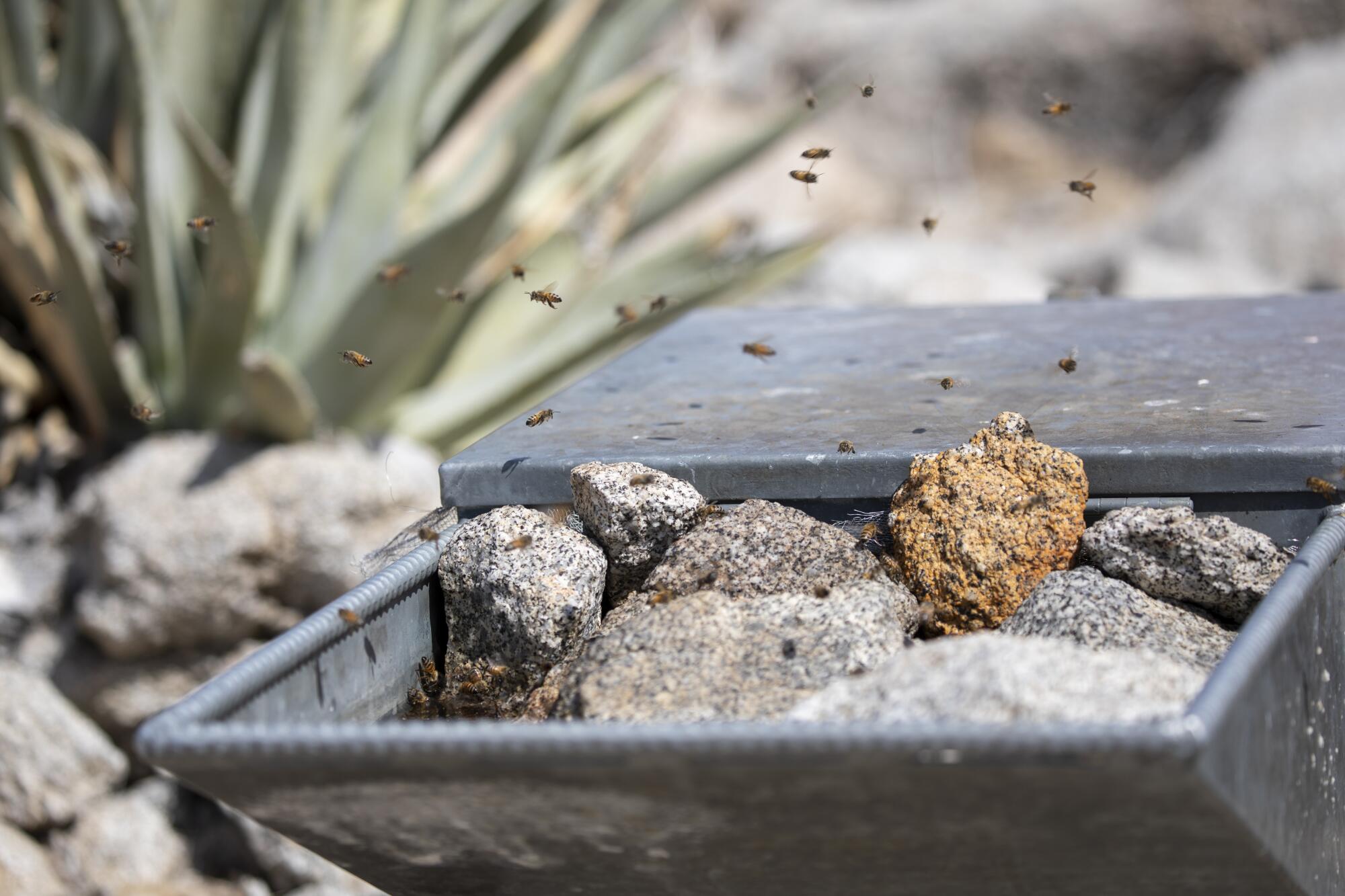
The cost of survival
Keeping guzzlers full and functioning has become an increasingly demanding task amid ongoing drought. The state relies on pro-hunting groups to maintain a network of roughly 200 big-game guzzlers throughout Southern California.
However, it’s often a leak or a broken float valve that triggers the need for an emergency water drop, said Scott Gibson, area captain coordinator with the Pasadena-based Society for the Conservation of Bighorn Sheep.
“Usually, something bad has to happen,” he said. “Like in Anza-Borrego, they’ve had mechanical failures.”
Last year, Gibson helped coordinate five water deliveries, from Whale Peak to Twentynine Palms to the Chocolate Mountains east of the Salton Sea. The Marines out of Yuma and Camp Pendleton donated the helicopter time, which can cost more than $40,000 a trip, he said.
Lately, Gibson has been advocating for the installation of below-ground guzzlers that have few if any moving parts. These devices allow animals to walk down a ramp into a drinking pond as water levels drop.
While California pioneered many of the country’s first guzzlers, starting with smaller devices for quail in the 1950s and then for sheep in the ‘70s and ‘80s, he said, other western states are now leading the way.
Arizona Game and Fish Department, for example, maintains about 3,000 water catchment devices throughout the state. The agency, which is primarily funded by the sale of hunting and fishing licenses, spends about $1 million a year to fill these systems.
However, the department has seen the demand for water deliveries skyrocket in recent years.
In 2020, the state hauled 2.4 million gallons of water, up from an average of about 1.5 million gallons, said Esther Rubin, research branch chief for the department.
“We were ready to haul 3 million gallons in 2021, but then we got some monsoon rains,” she said. “That costs a lot.”
In response, the state has asked citizens to donate to the cause. Billboards promoting the SENDWATER campaign are a common sight in many places.
The approach has so far been working, Rubin said. “The public has been so supportive of this, huge donations to haul water for wildlife.”
However, that’s a situation McCamish of Anza-Borrego park doesn’t want to find himself in. While the military and volunteer groups have so far been footing the bill for water drops, he worries about setting a long-term precedent that could overwhelm the agency’s budget.
Other aspects of the park could suffer if too much focus is put on sheep, he recently told the Union-Tribune.
“I want to see this species thrive, but if I have to die on this hill, I will continue to preach for the greater ecological good,” he said. “There is a whole landscape beyond an individual species.”
More to Read
Sign up for Essential California
The most important California stories and recommendations in your inbox every morning.
You may occasionally receive promotional content from the Los Angeles Times.
